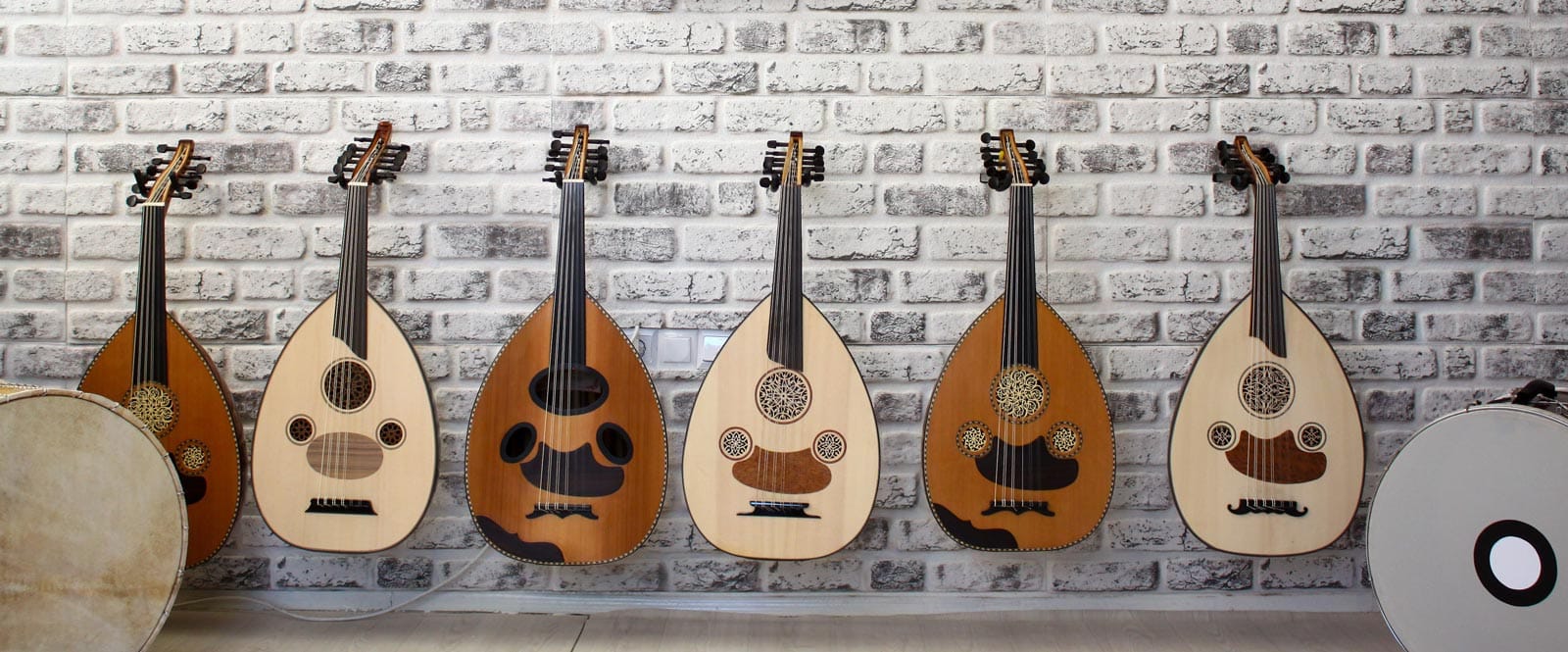Introduction
The oud is one of the most iconic instruments in Middle Eastern, Turkish, and Persian music. Its deep, resonant tone and fretless design allow for expressive playing and quarter tones unique to traditional music. However, choosing your first oud can be challenging due to the variety of types, materials, and craftsmanship levels available.
This guide will help beginners understand the different oud types, what factors to consider when buying one, and how to ensure they start with the right instrument.
Understanding the Different Types of Ouds
Ouds come in different styles, and each has specific characteristics that suit different musical traditions.
1. Arabic Oud
- Common in Middle Eastern music (Egypt, Syria, Lebanon, Iraq).
- Deep, warm, and resonant tone.
- Usually tuned lower for a more emotional sound.
2. Turkish Oud
- Used in Turkish, Greek, and Armenian music.
- Brighter and more vibrant tone than the Arabic oud.
- Has a smaller body and is tuned slightly higher.
3. Persian Oud (Barbat)
- Used in Persian classical music.
- Smaller and lighter in design.
- Produces a softer and more delicate sound.
5. Electric Oud
- Modern adaptation with built-in pickups.
- Useful for amplified performances and experimental music.
Choosing a Quality Oud: Materials and Build
The wood and craftsmanship of an oud play a major role in its sound, durability, and playability.
| Material | Sound Characteristics | Common Uses |
|---|---|---|
| Spruce | Bright, resonant, responsive | Oud soundboards |
| Cedar | Warm, rich, smooth tones | Arabic ouds |
| Walnut | Balanced, clear, good sustain | Turkish and Arabic ouds |
| Mahogany | Deep, warm tones | Traditional and professional ouds |
| Rosewood | Deep, complex sound | Fretboards and backs |
Soundboard and Bowl Construction
- The soundboard should be thin but strong for good resonance.
- The body (bowl) is made of multiple wood strips; more strips often mean better craftsmanship.
- High-quality ouds are handmade with better wood selection and precision.
Neck and Tuning Pegs
- The neck should be straight and comfortable for hand positioning.
- Pegs should turn smoothly without slipping to ensure tuning stability.
Size and Playability
Choosing the right size is essential for comfort and ease of playing.
- Standard ouds suit most players.
- Smaller ouds are available for players with smaller hands.
- A well-balanced oud should feel comfortable when played while seated.
Beginner, Intermediate, and Professional Ouds
| Type | Price Range | Best For |
|---|---|---|
| Beginner Oud | $150 – $500 | New learners, basic practice |
| Intermediate Oud | $500 – $1,500 | Students, casual performances |
| Professional Oud | $1,500+ | Advanced players, recordings, and concerts |
Common Problems When Buying an Oud
- Loose or stiff tuning pegs – leads to tuning instability.
- Cracked soundboard or body – affects sound quality and durability.
- High or low string action – can make playing uncomfortable.
- Poor quality lacquer finish – indicates lower craftsmanship.
How to Buy a New Oud
Follow these steps to make a smart purchase:
- Compare different models and brands before making a decision.
- Listen to the oud’s sound – it should be balanced and resonate well.
- Check for smooth tuning peg adjustments.
- If buying online, ask for a sound sample or demonstration video.
Learning to Play the Oud: Choosing the Right Method
Once you’ve selected your oud, choosing the right learning method is crucial.
1. Music Academy
- Provides structured learning with professional guidance.
- Good for students looking for a formal education.
2. Private Lessons
- One-on-one learning for more personalized feedback.
- Flexible scheduling.
3. Online Courses
- Convenient and self-paced.
- Quality varies depending on the platform.
4. Learning from YouTube
- Free and accessible.
- Not always structured; can lead to inconsistent learning.
Essential Accessories for Oud Players
- Risha (Pick): Different materials affect tone and playing style.
- Tuner: Helps with accurate tuning.
- Oud Strings: Choosing the right set for your style.
- Metronome: Essential for maintaining rhythm.
Conclusion
Choosing the right oud depends on your musical style, budget, and playability needs. If you’re a beginner, start with a well-built but affordable oud to develop technique before upgrading. Focus on reliable craftsmanship, avoid cheap models, and take the time to compare before purchasing.
FAQs
What is the best oud for a beginner?
A well-constructed Arabic oud with good playability is ideal.
How much should I spend on my first oud?
A budget of $300-$500 is reasonable for a quality beginner oud.
Should I start with an electric oud?
No. Beginners should start with an acoustic oud to develop technique.

